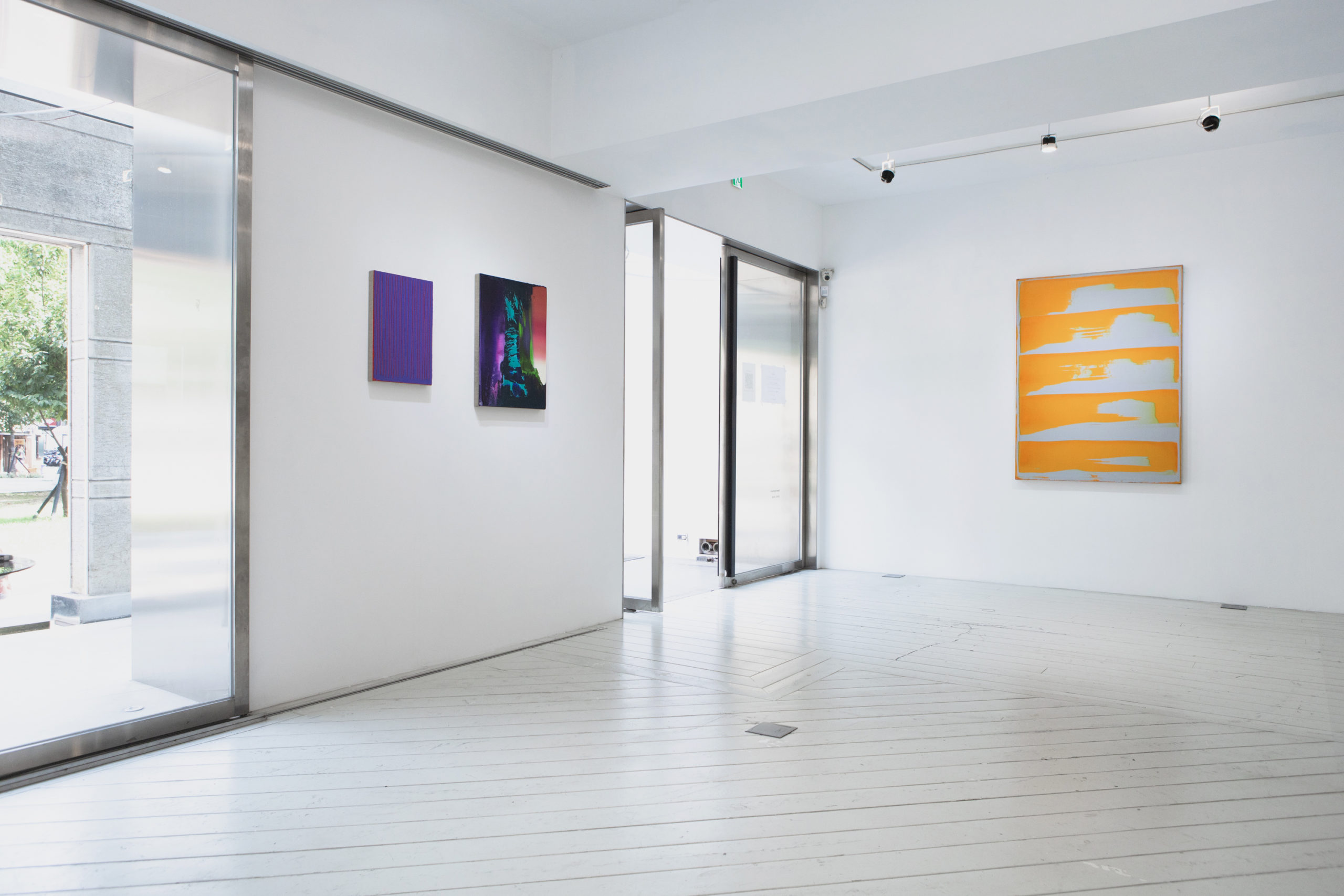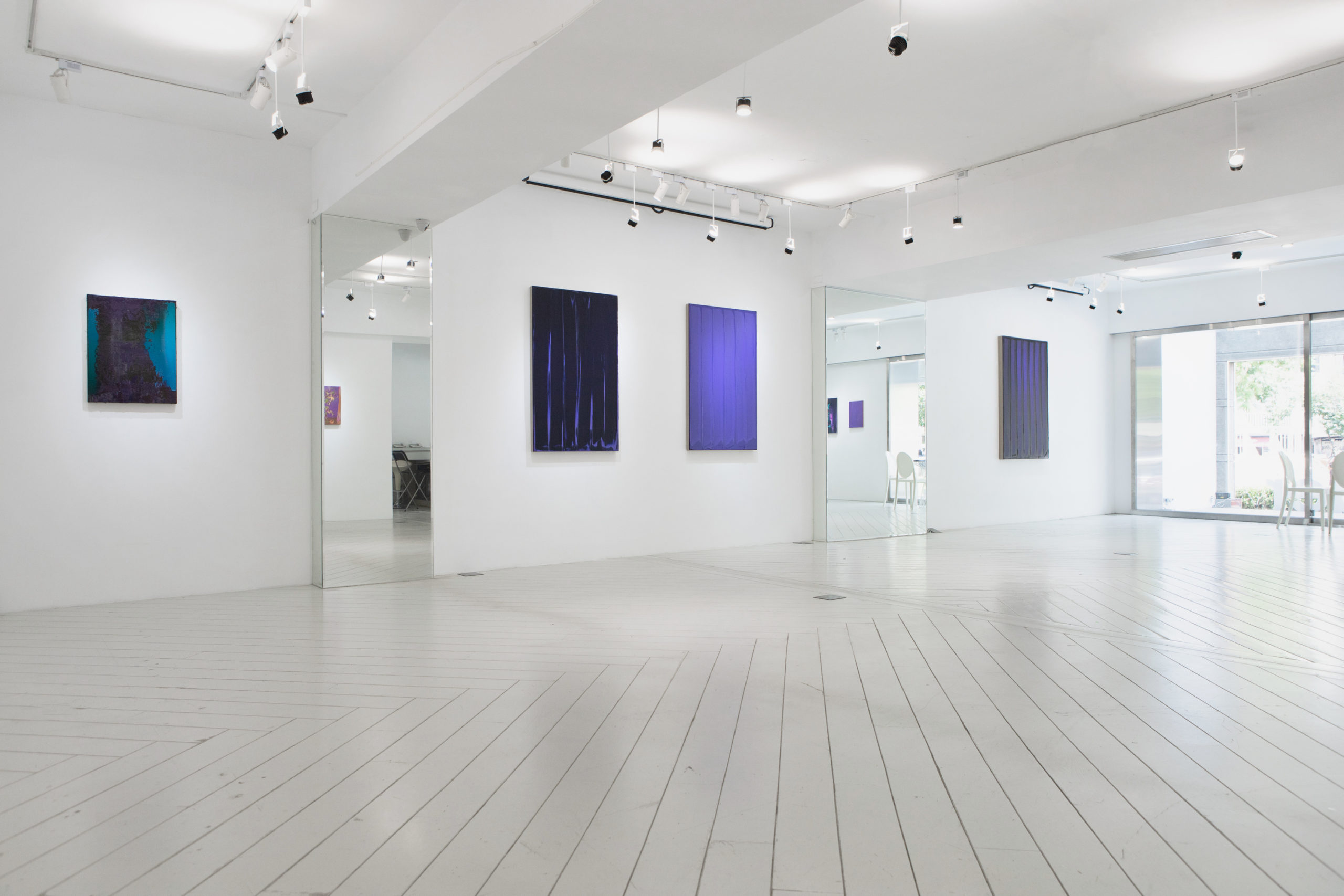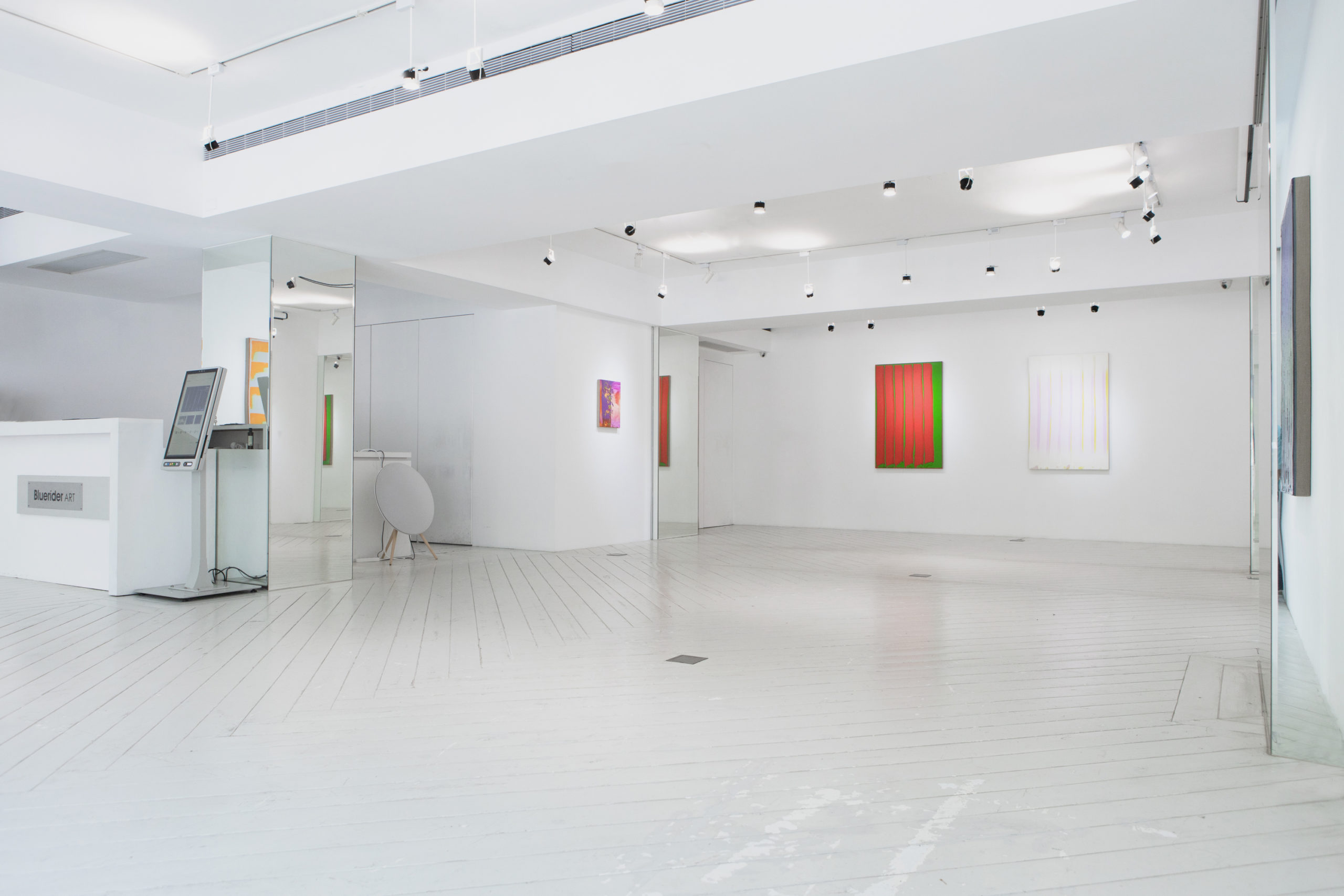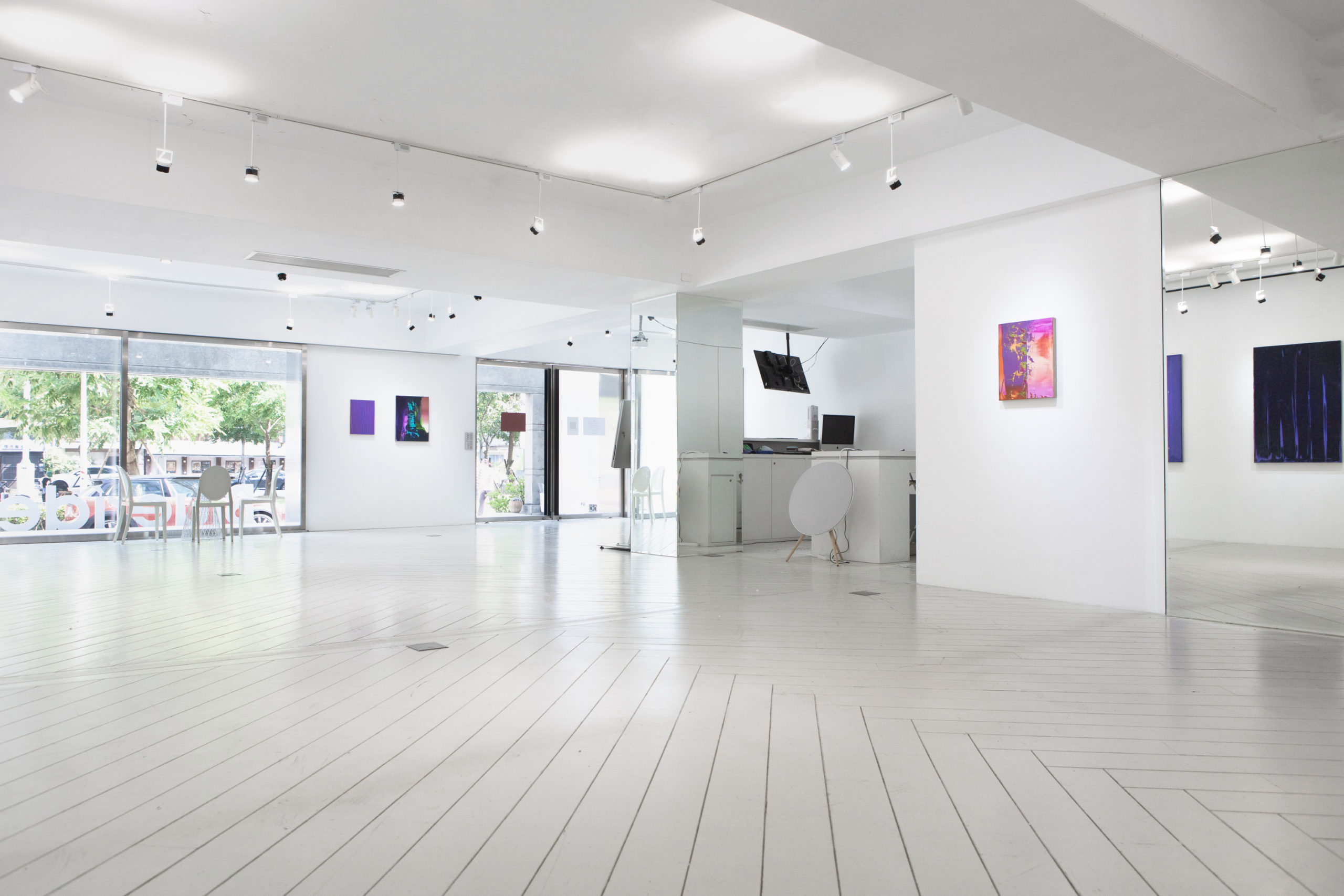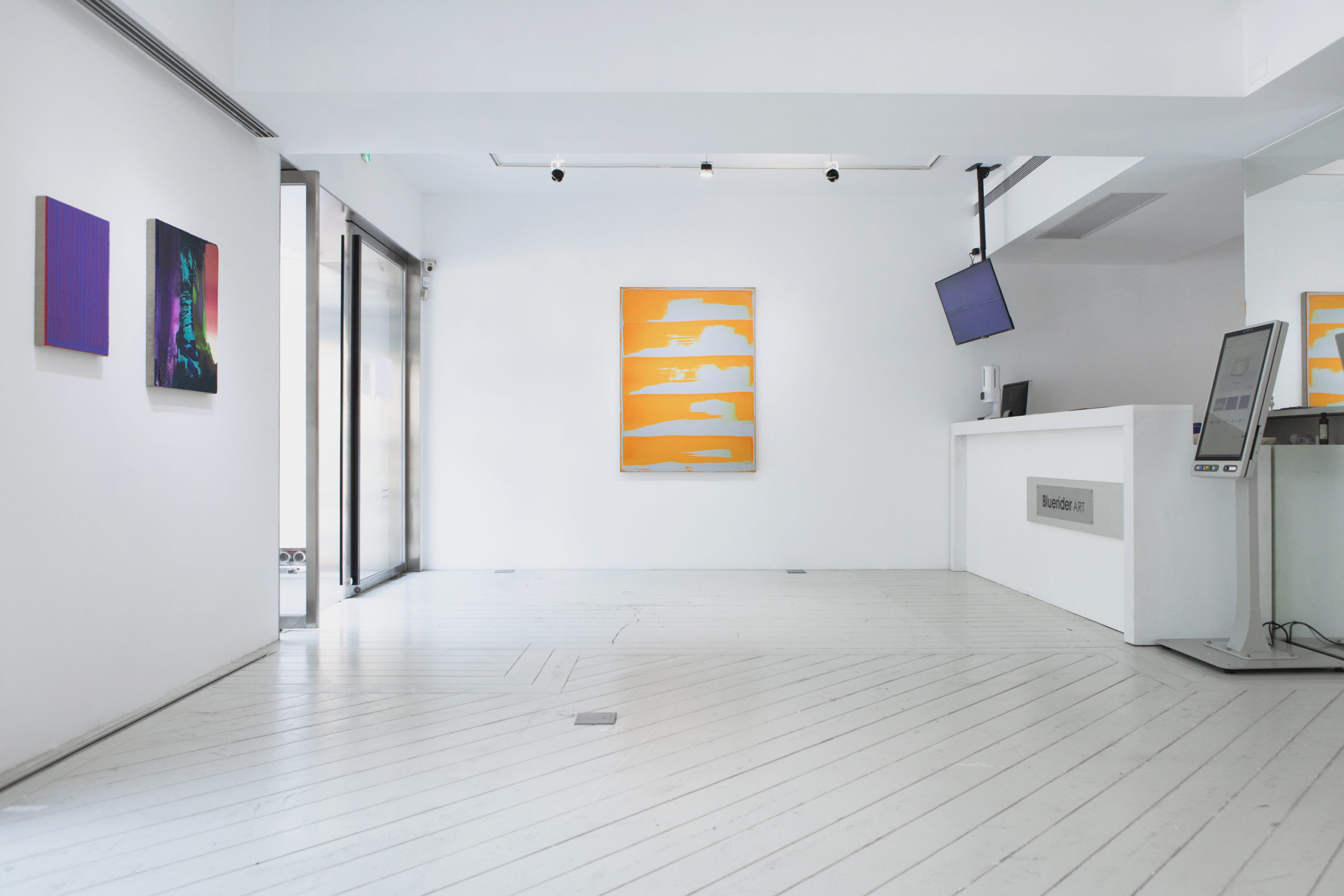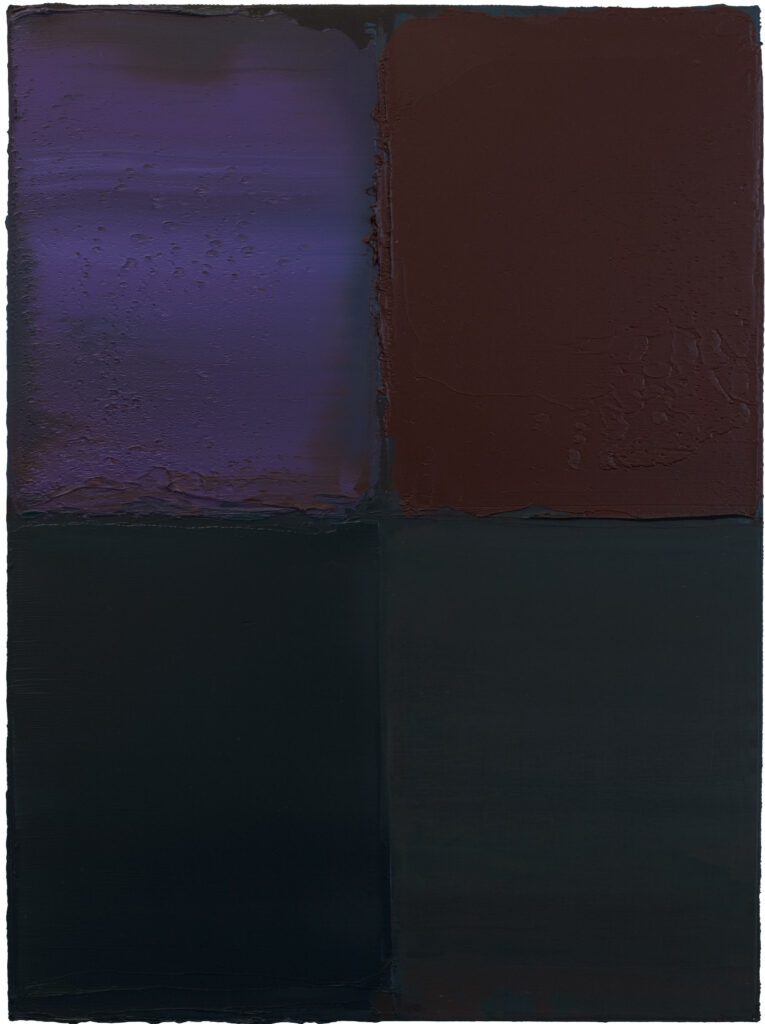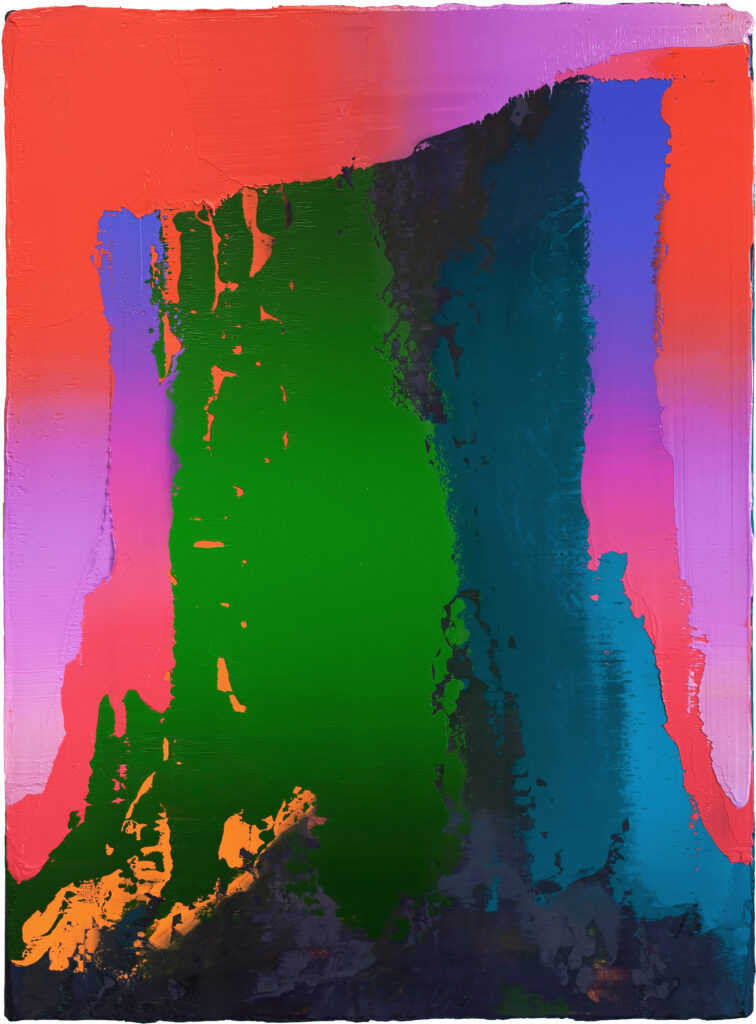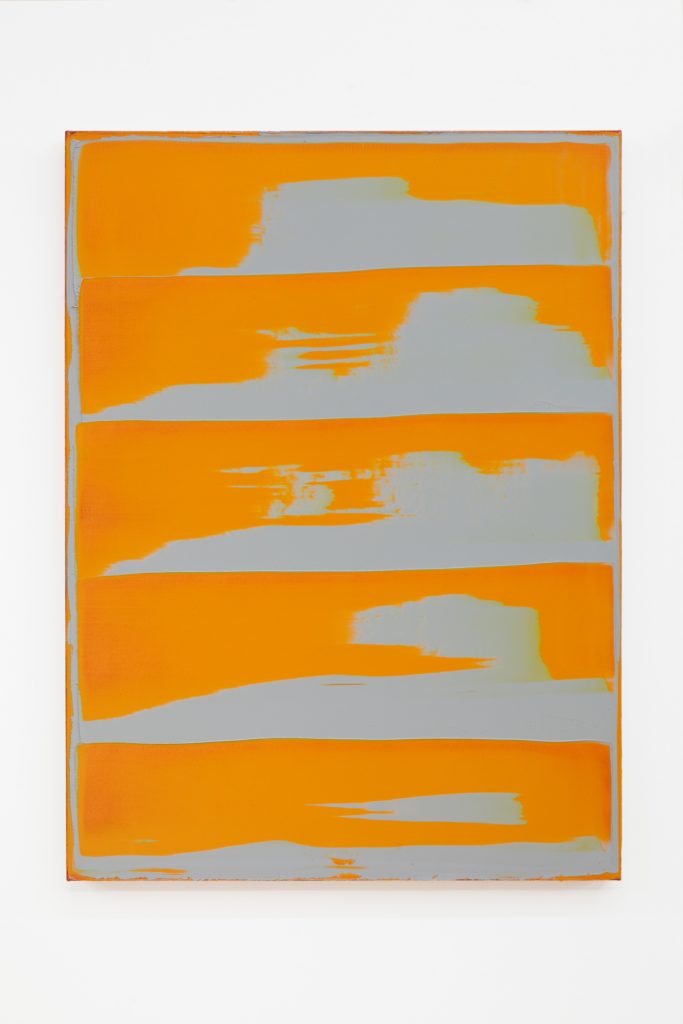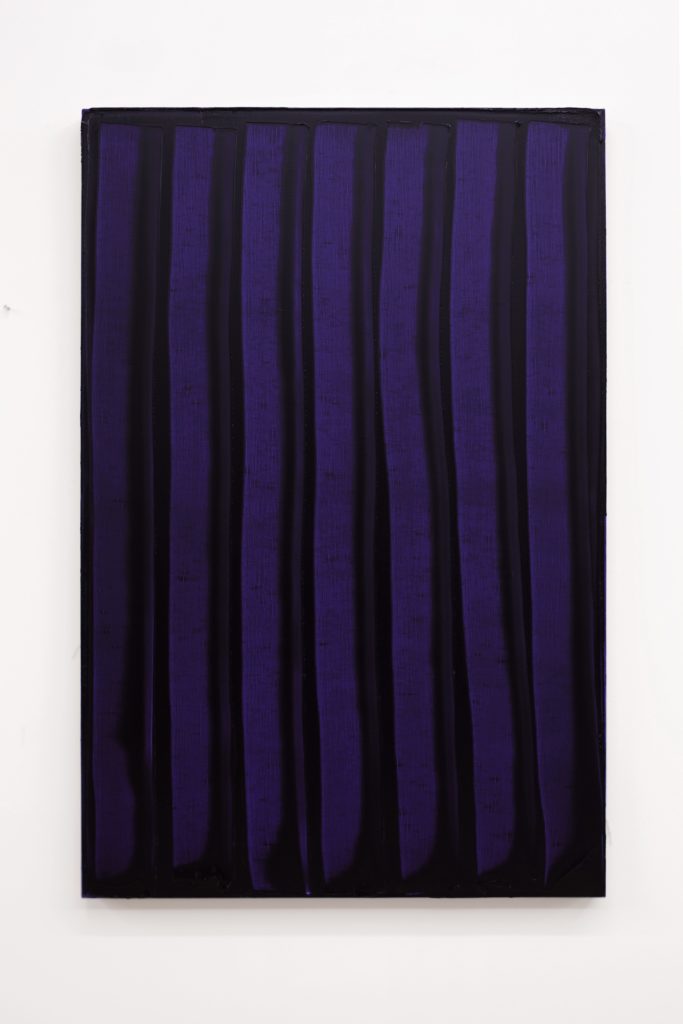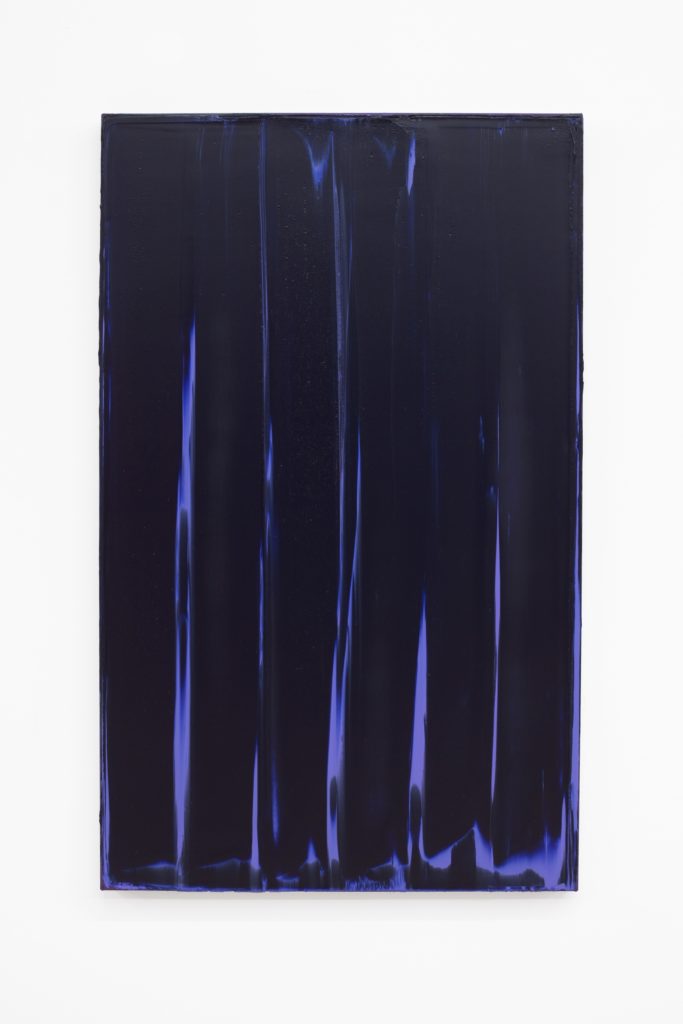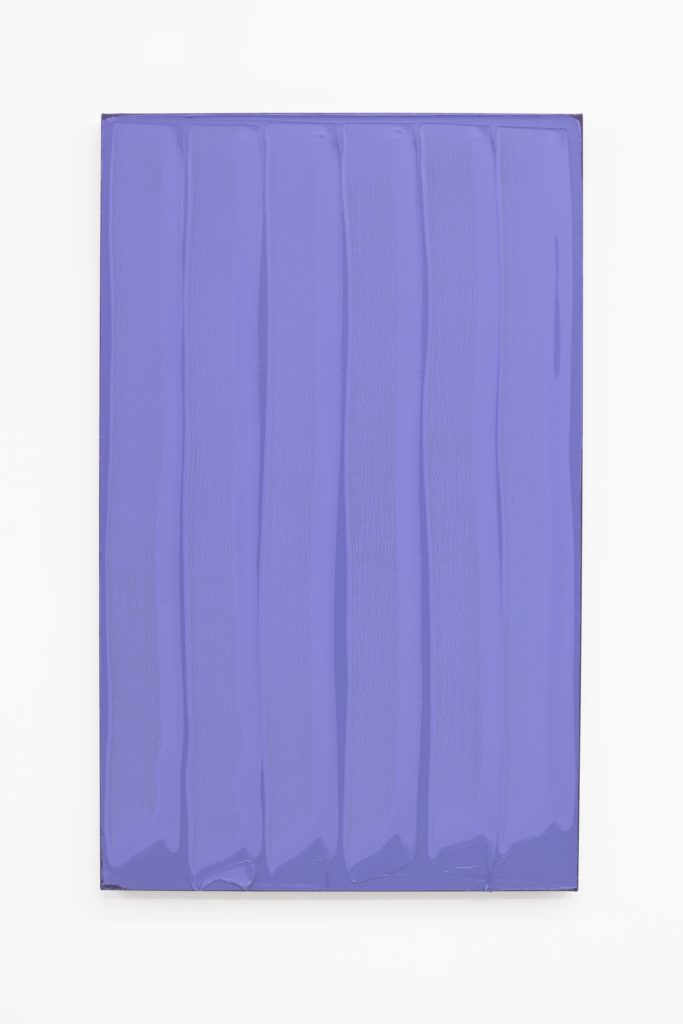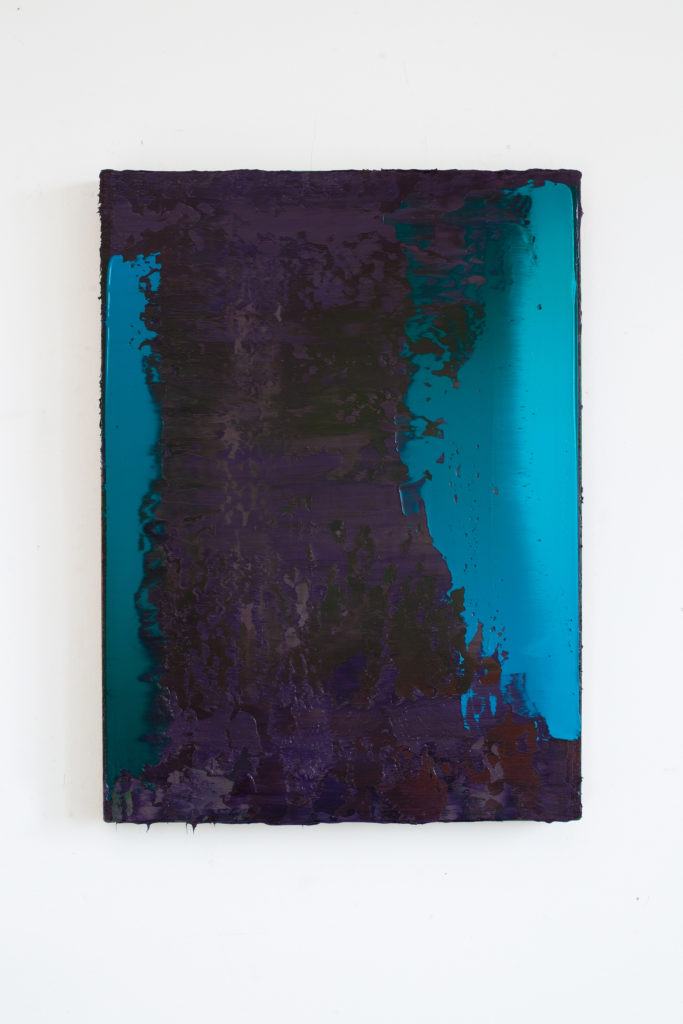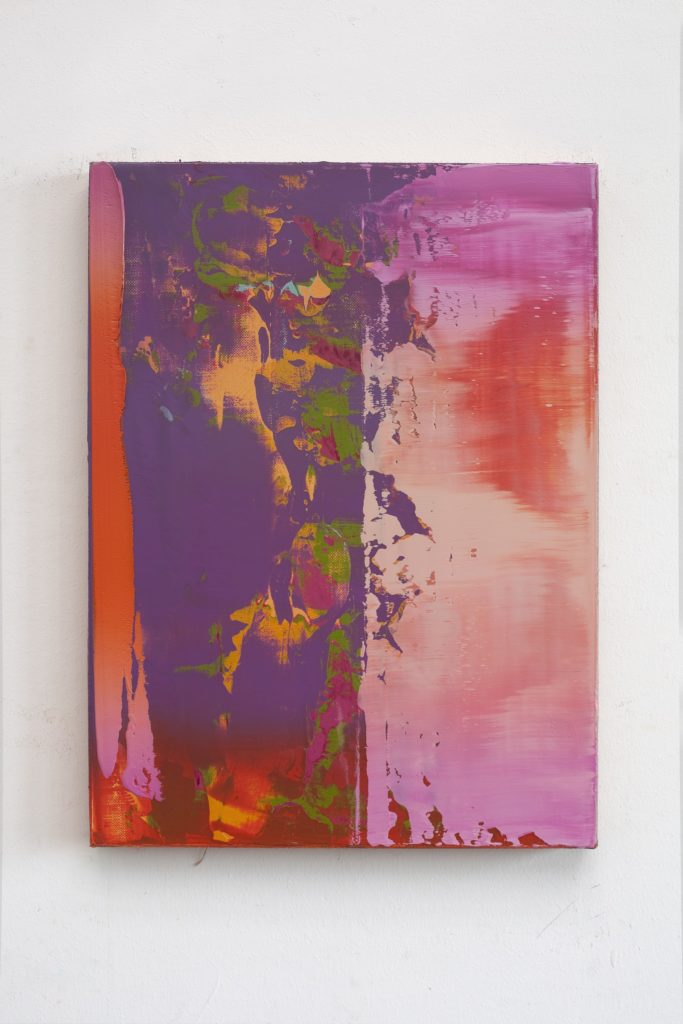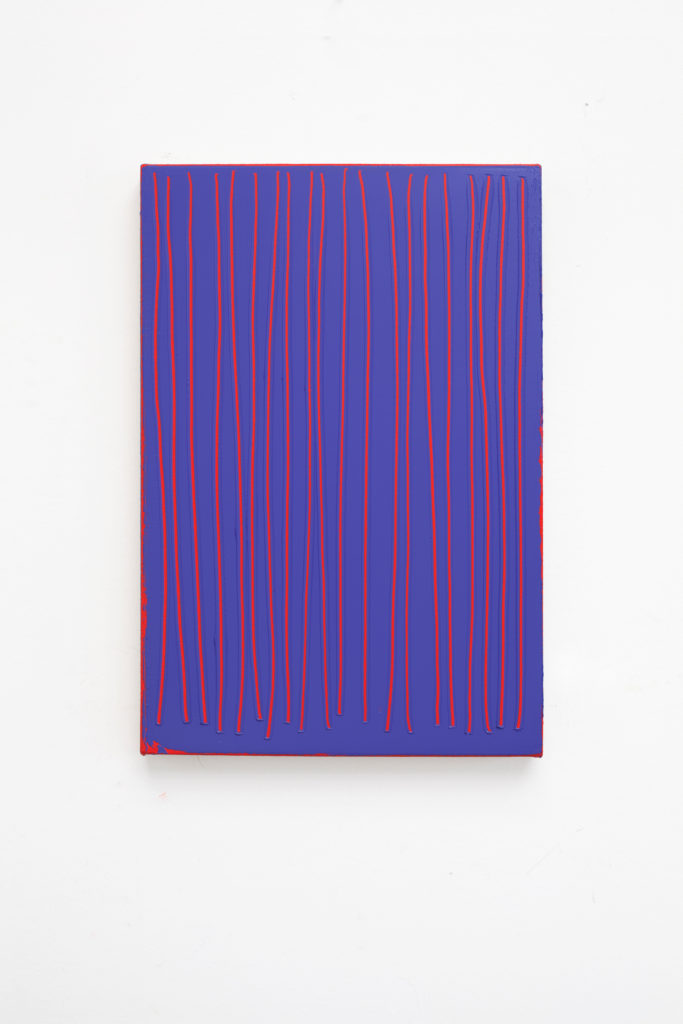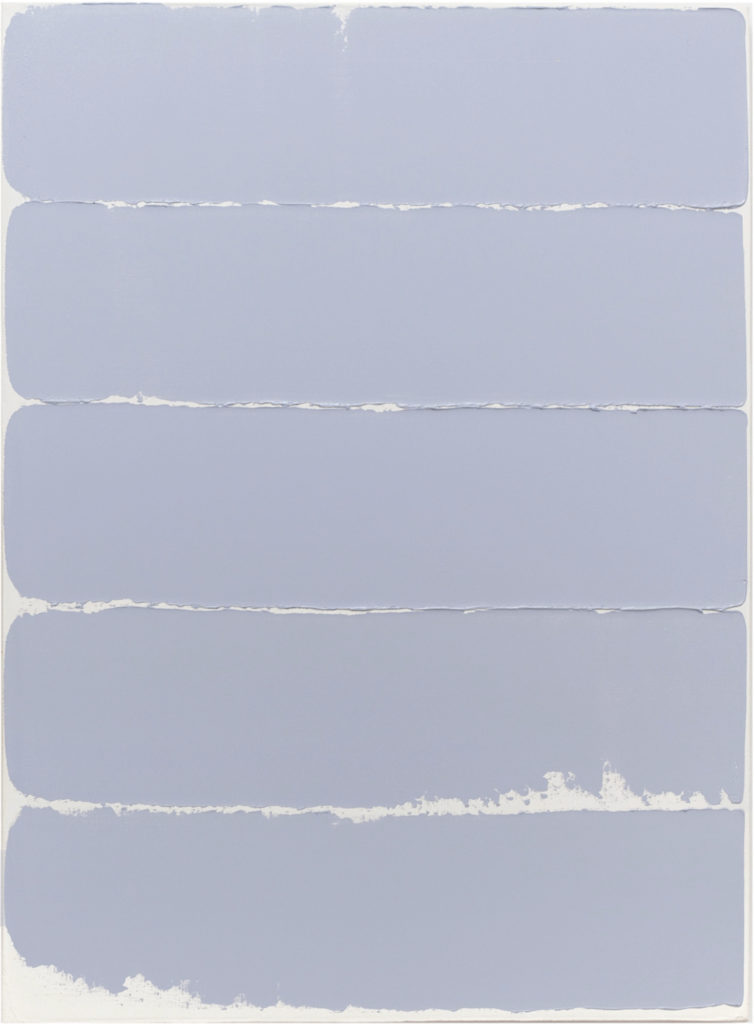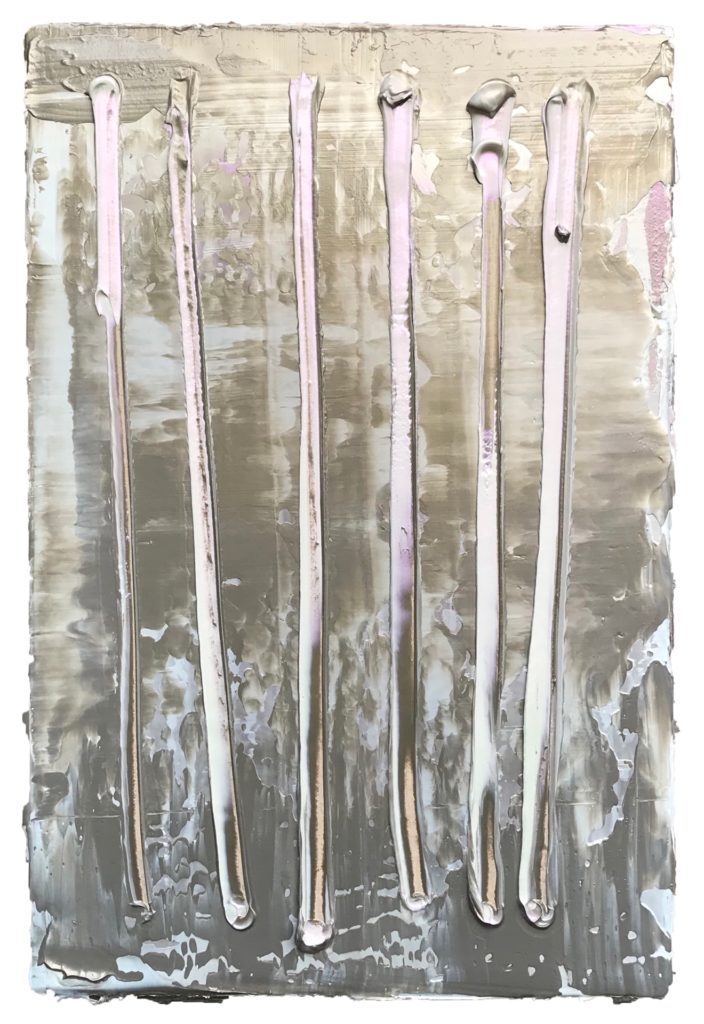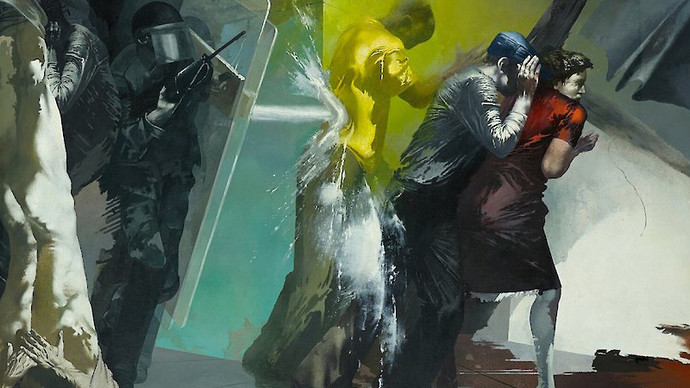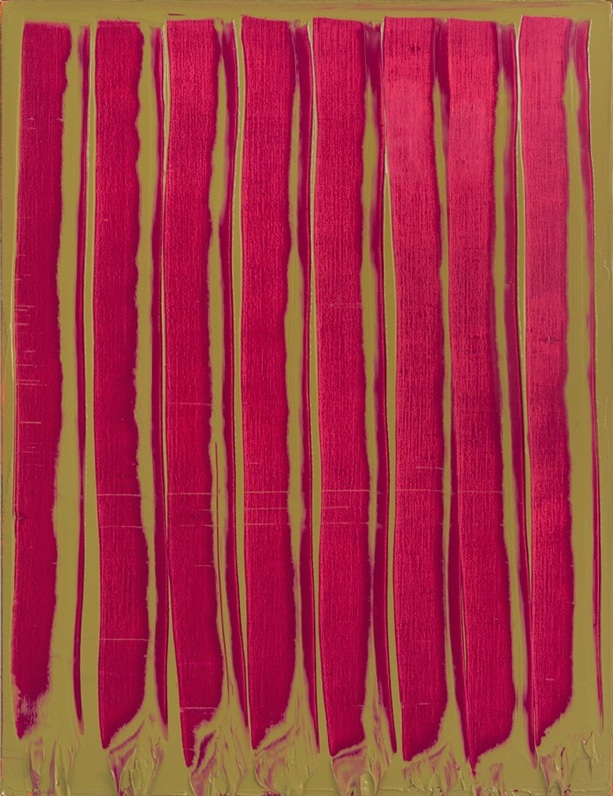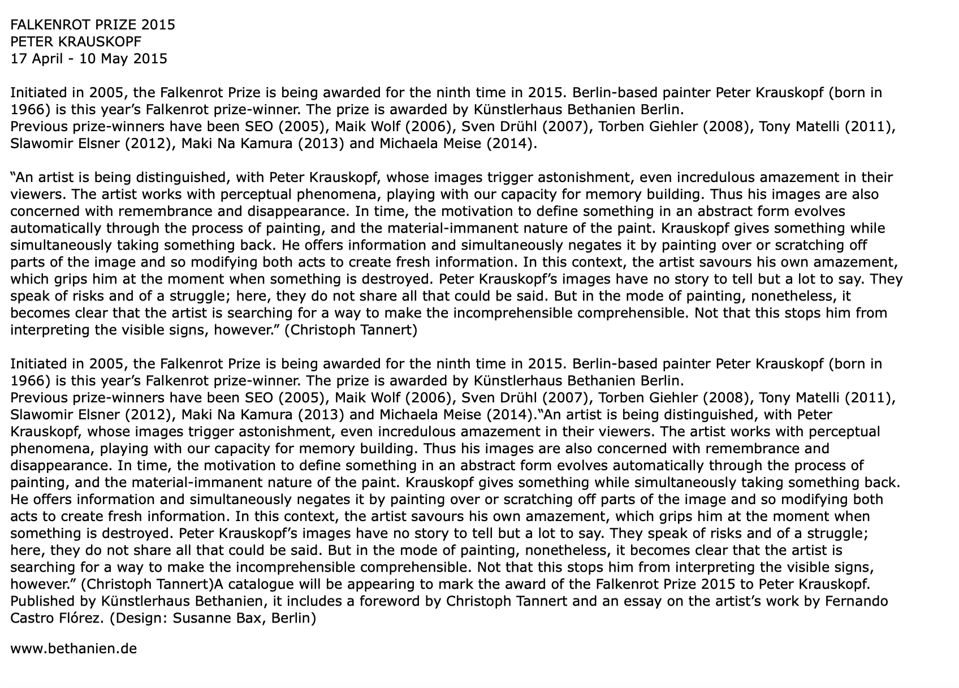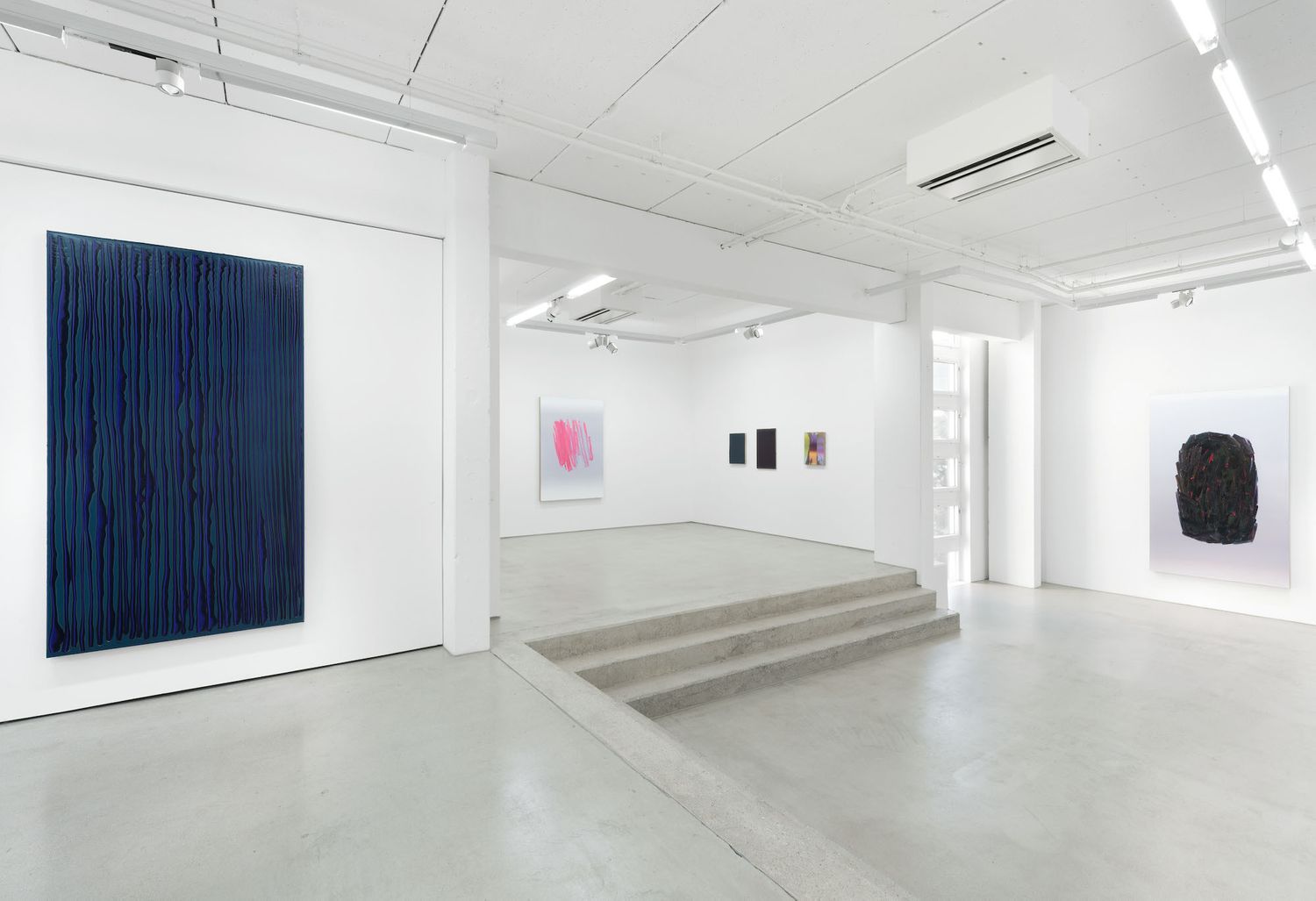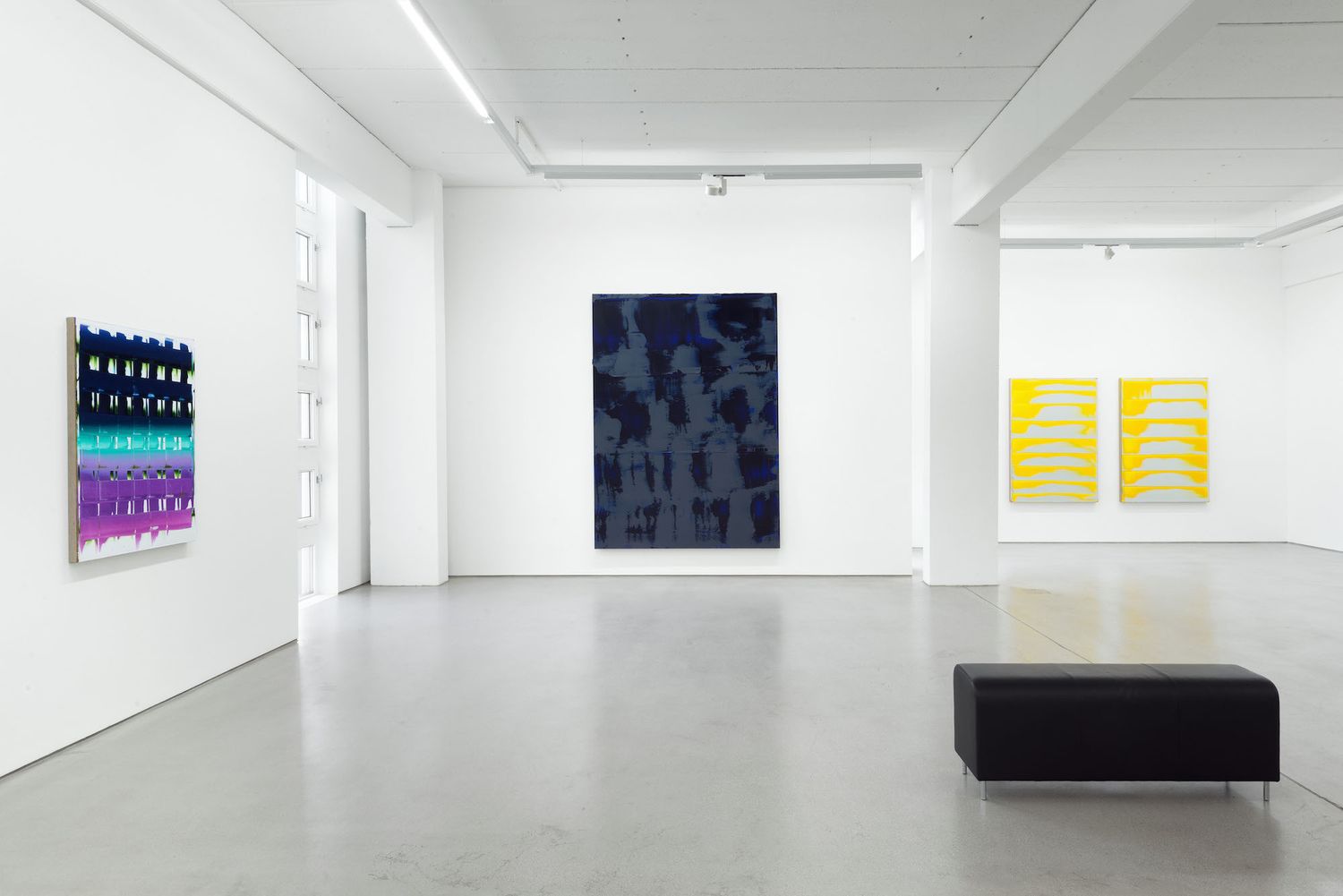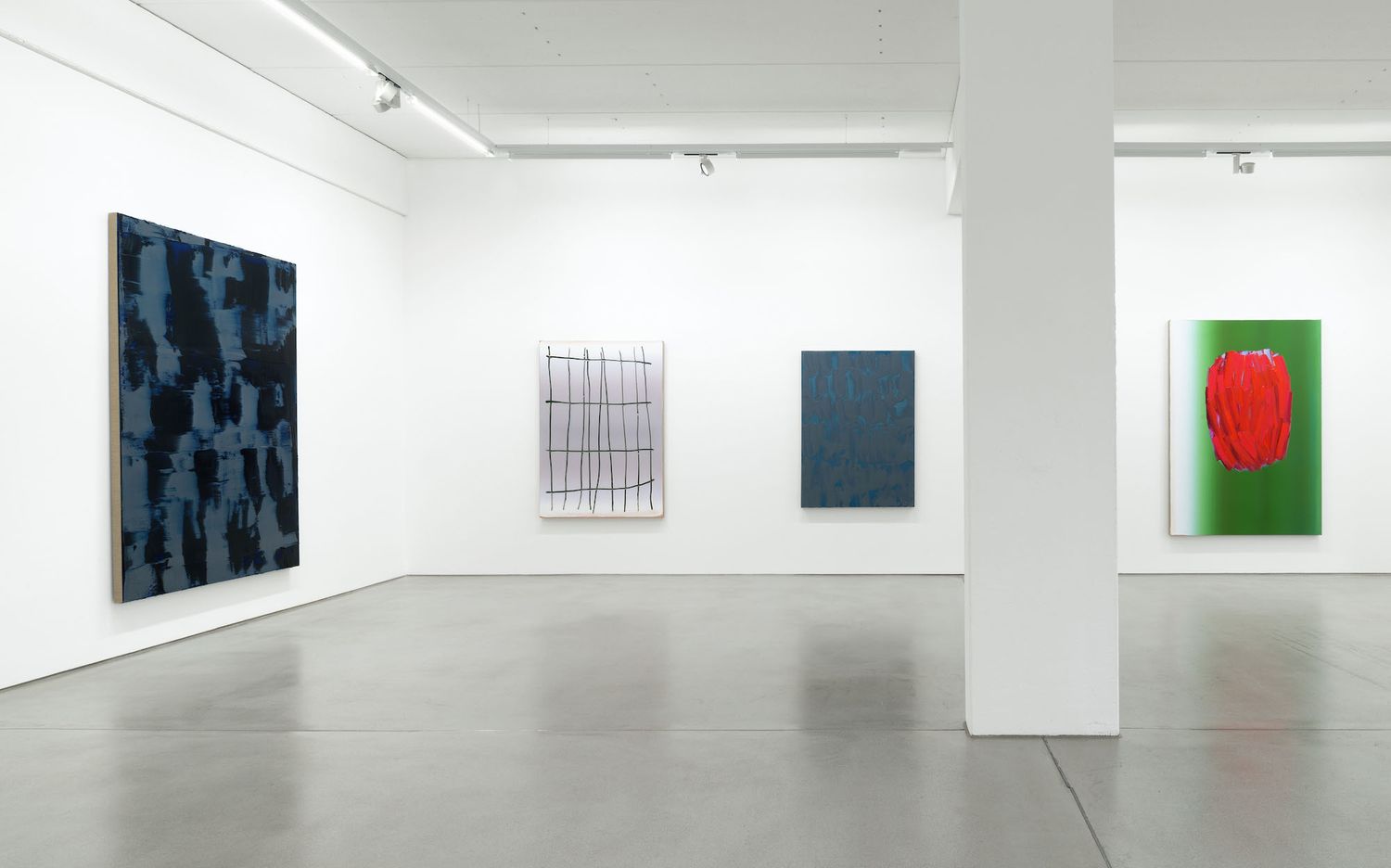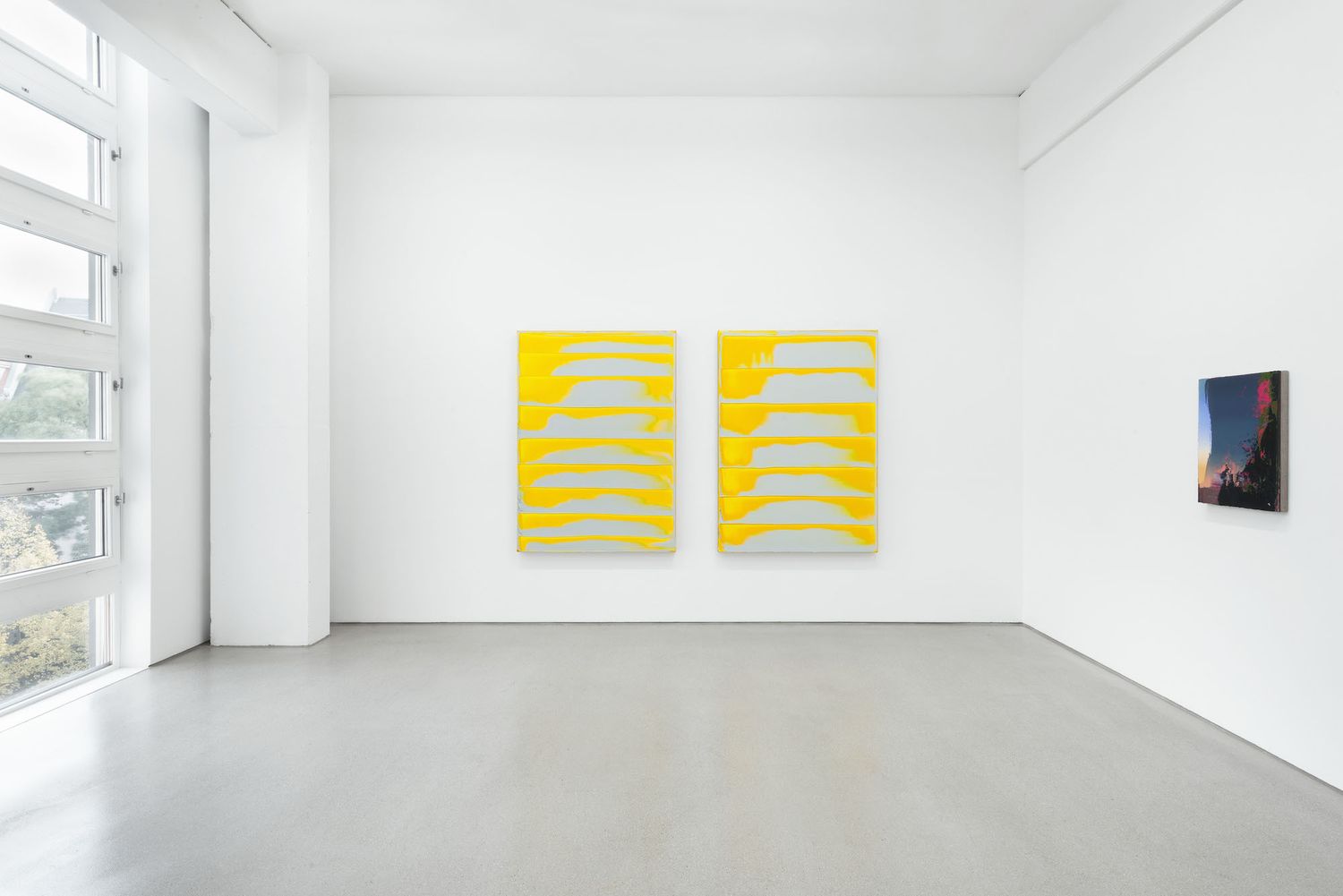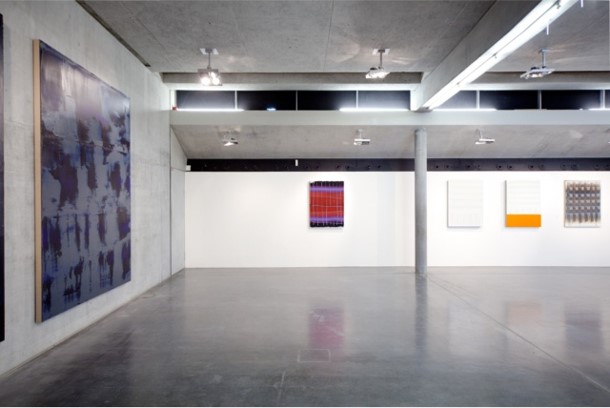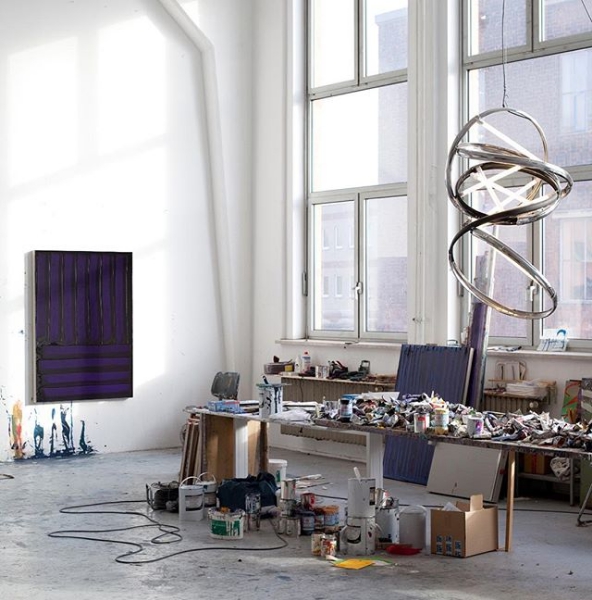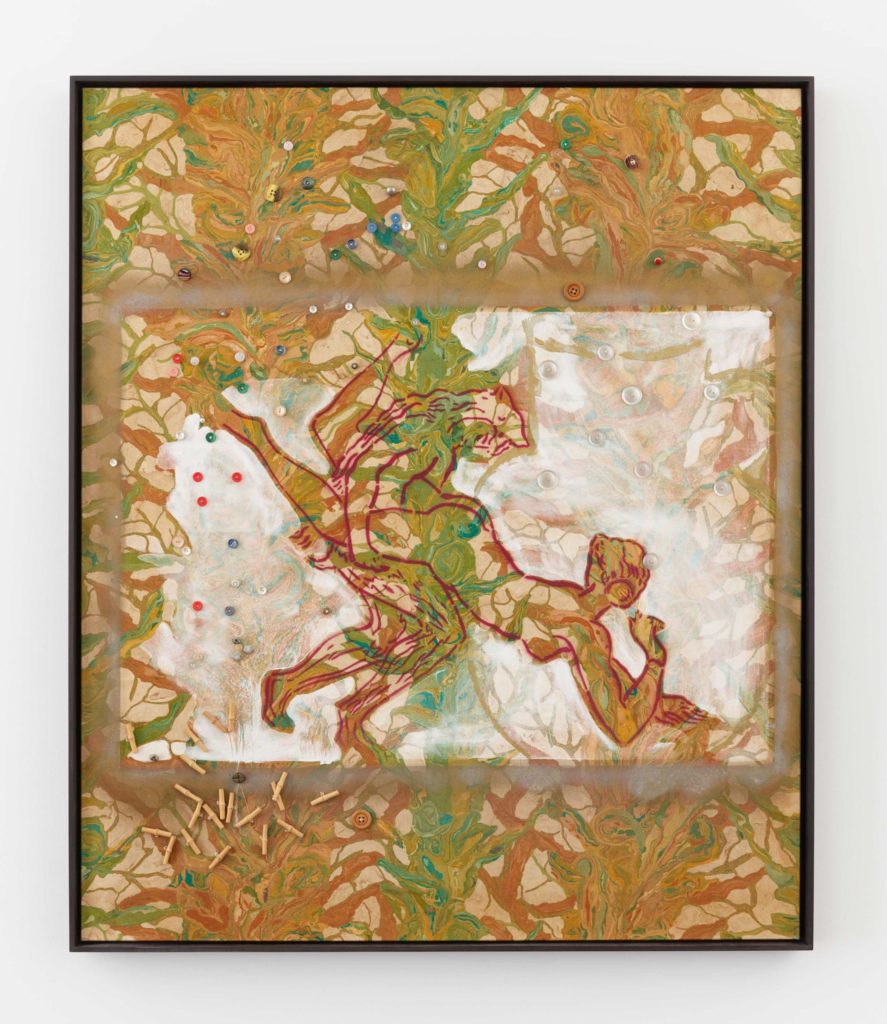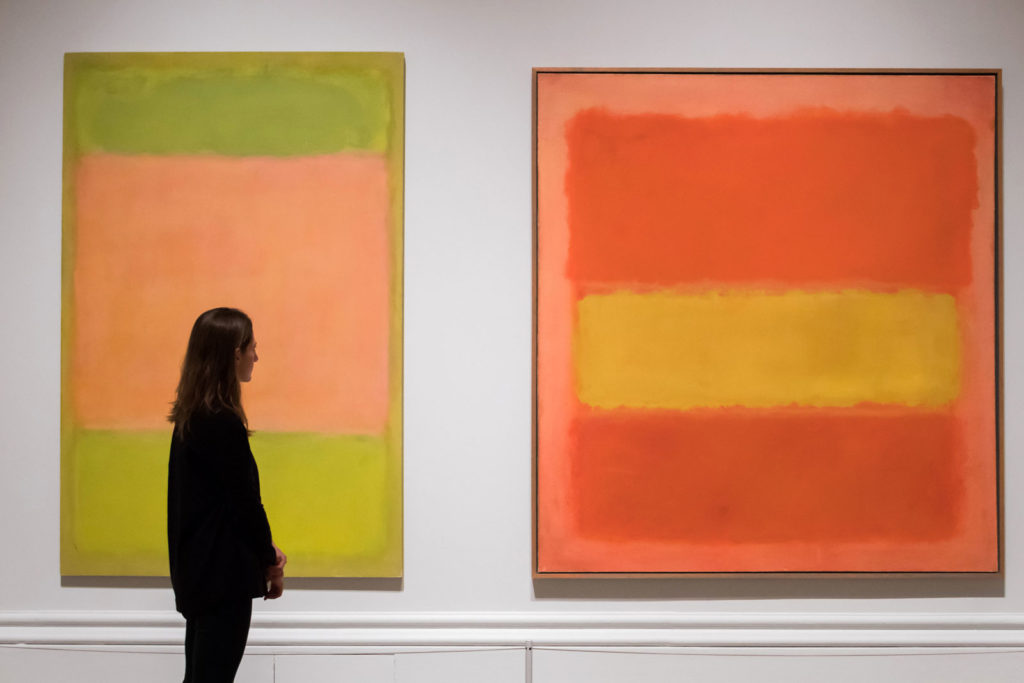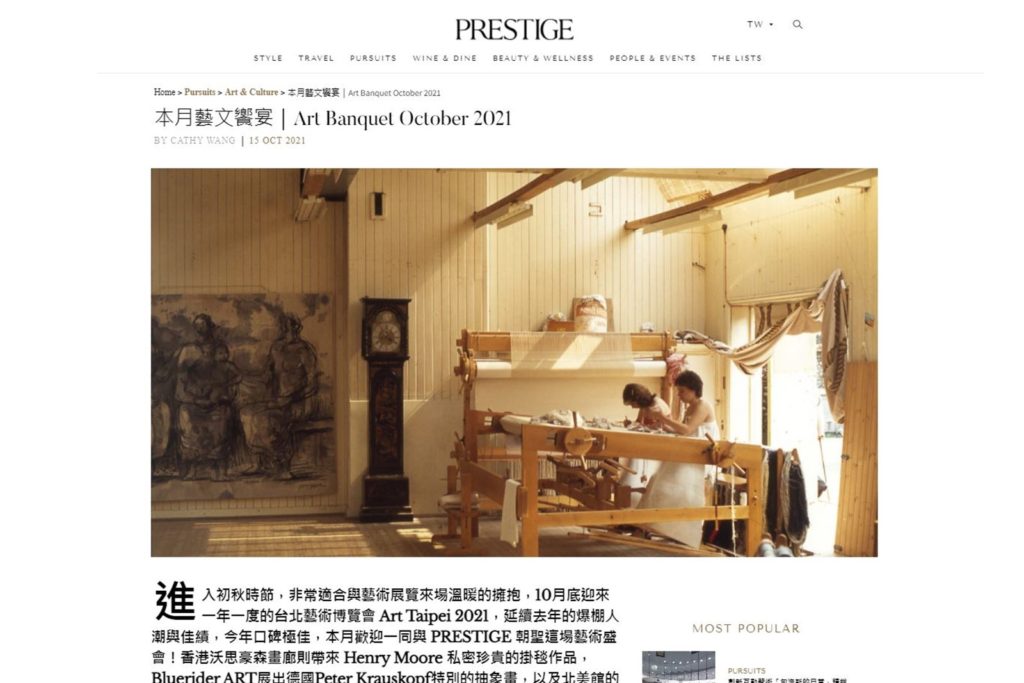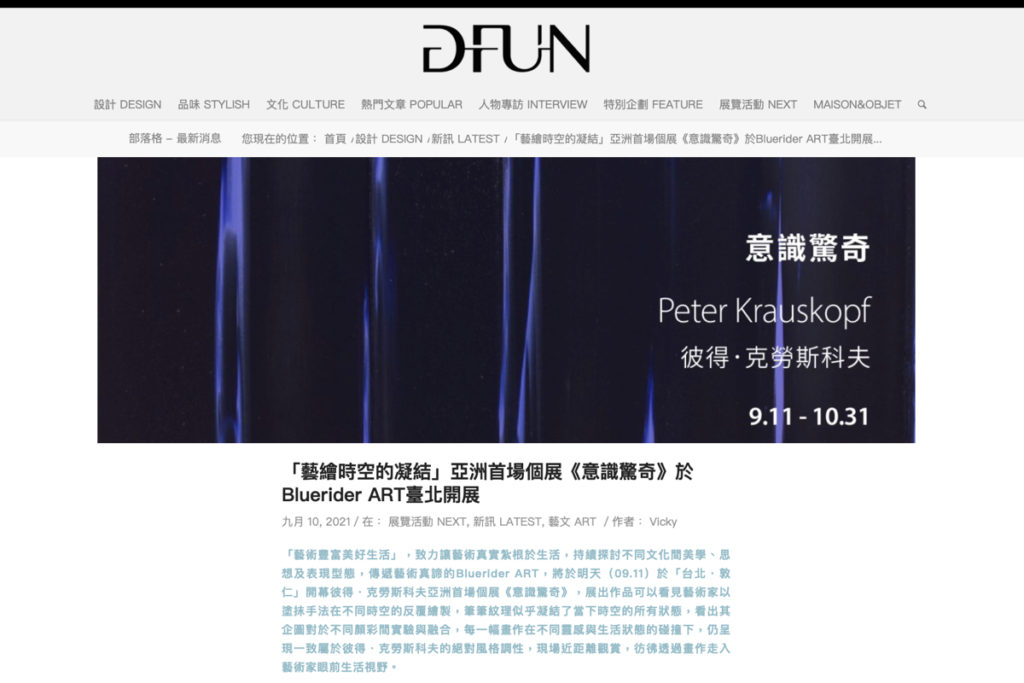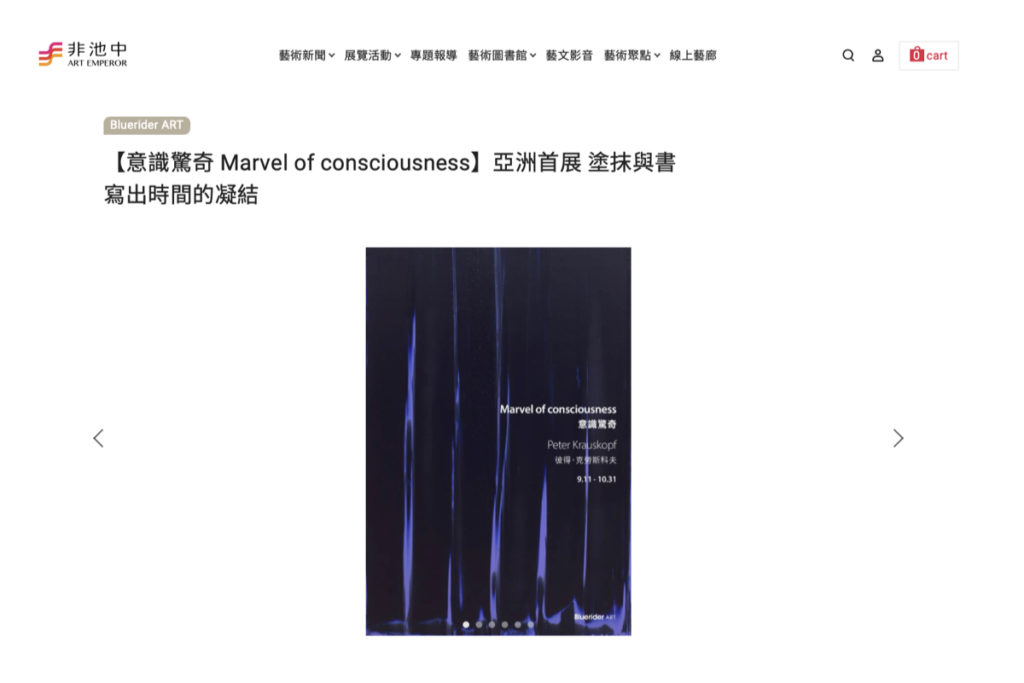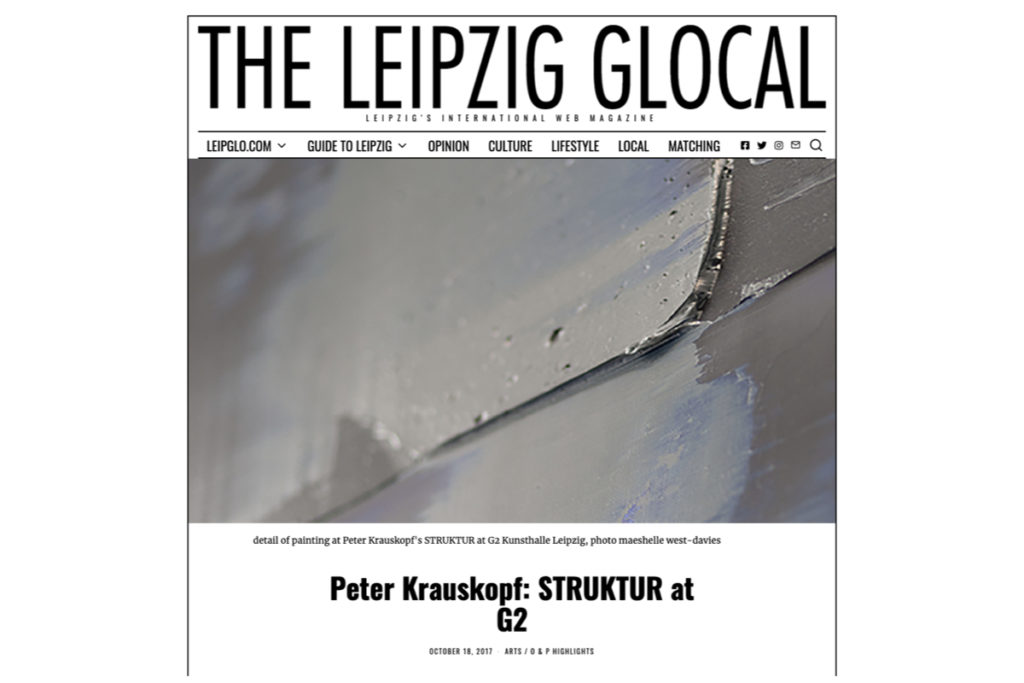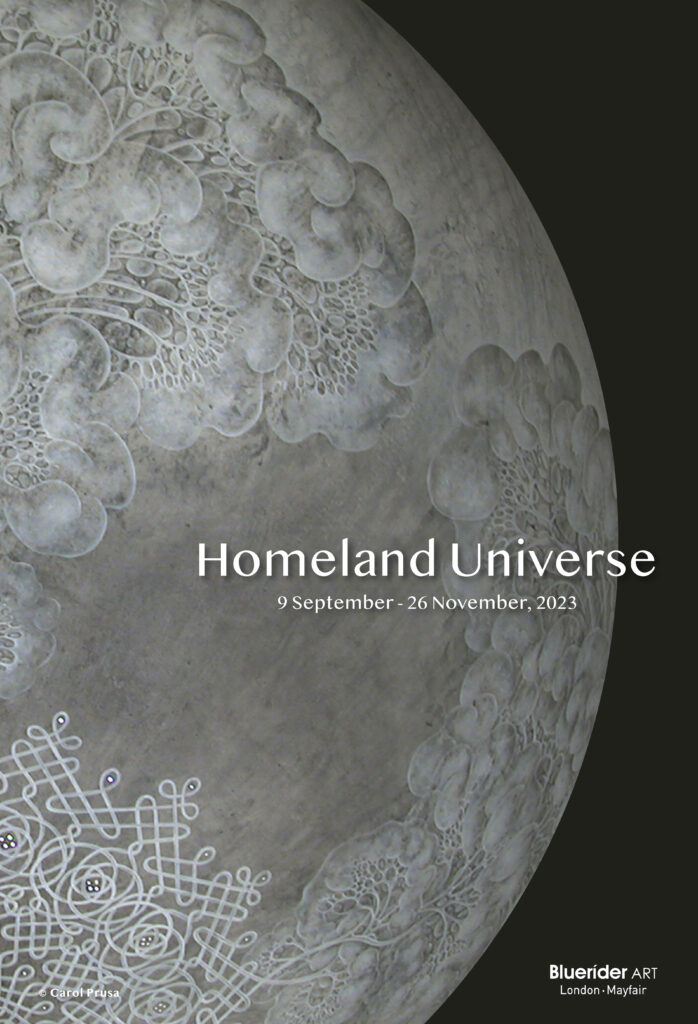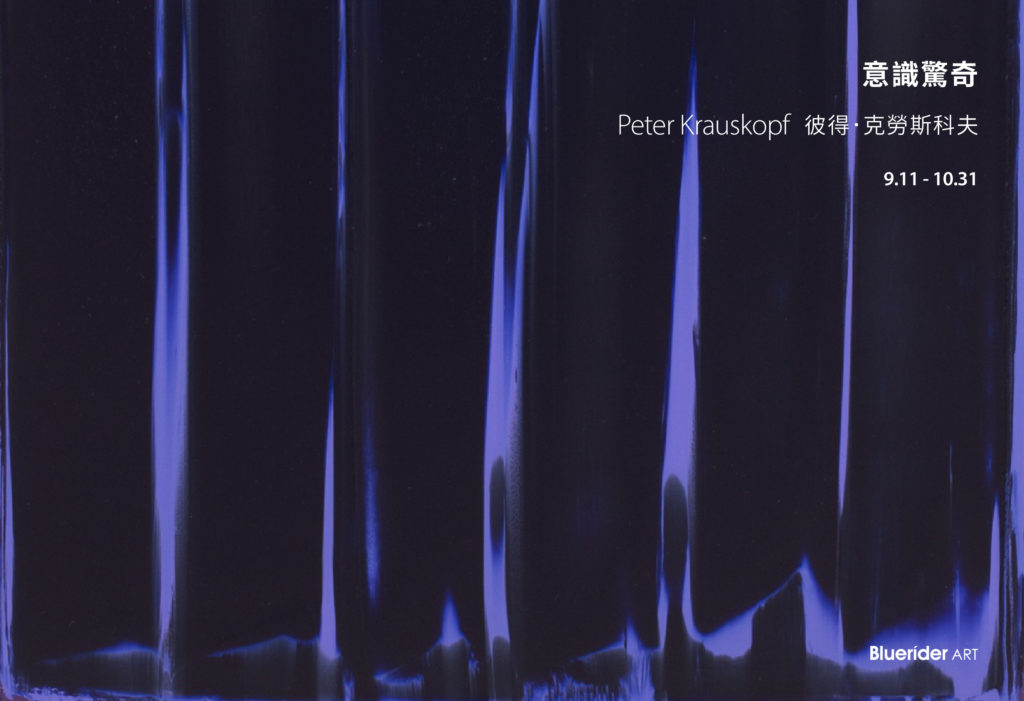

(Germany, b. 1966)
Peter Krauskopf studied at the Academy of Fine Arts in his birth town Leipzig and later continued as a post-graduate under Arno Rink. Known for his break with the figurative tradition of Leipzig painting, Peter Krauskopf especially interested in the process of overpainting, which he understands as an overwriting of time. All of his pieces – the intensive colored smaller plates, as well as the big monochrome color gradients, seem to be abstract at first sight, but they are all ‘concretions of a period of time’. On homogeneous, smooth grounds which either consist of an old, former abandoned painting or a monochrome under painting, Krauskopf performs one single intervention to form a new picture. In 2015 he received the Falkenrot Prize. His paintings were widely exhibited including the Mies van der Rohe-Haus, Berlin, the Forum Kunst Rottweil, the Kunsthalle Lingen and Kunsthaus Kaufbeuren, works presented in the collection of the Albertinum in Dresden, the Ludwig Forum in Aachen, the City Museum of Wrocław, the Kunstverein Ludwigshafen, the Museum Schloss Morsbroich in Leverkusen, Kupferstichkabinett and the Galerie Neue Meister in Dresden, Germanisches Nationalmuseum in Nuremberg.
Falkenrot Prize, 2015
Peter Krauskopf – S T R U K T U R at G2 Kunstalle, Leipzig, 2018
“Drift”, 2018 at Kunsthaus Kaufbeuren, Germany
Peter Krauskopf is especially interested in the process of overpainting, which he understands as an overwriting of time. All of his pieces – the intensive colored smaller plates, as well as the big monochrome color gradients – seem to be abstract at first sight. But they are all ‘concretions of a period of time’. On homogeneous, smooth grounds which either consist of an old, former abandoned painting or a monochrome under painting, Krauskopf performs one single intervention to form a new picture. Therefore he uses a scraper or brush to push a flat, consistent color application over an already existing image. This way he creates a symbiosis between a picture of the past and its completion in the present. Peter Krauskopf’s new works can be understood as collages about the phenomenon of time itself.


Peter Krauskopf|Z, B290920|2020|140 x 90 cm|Oil on linen 
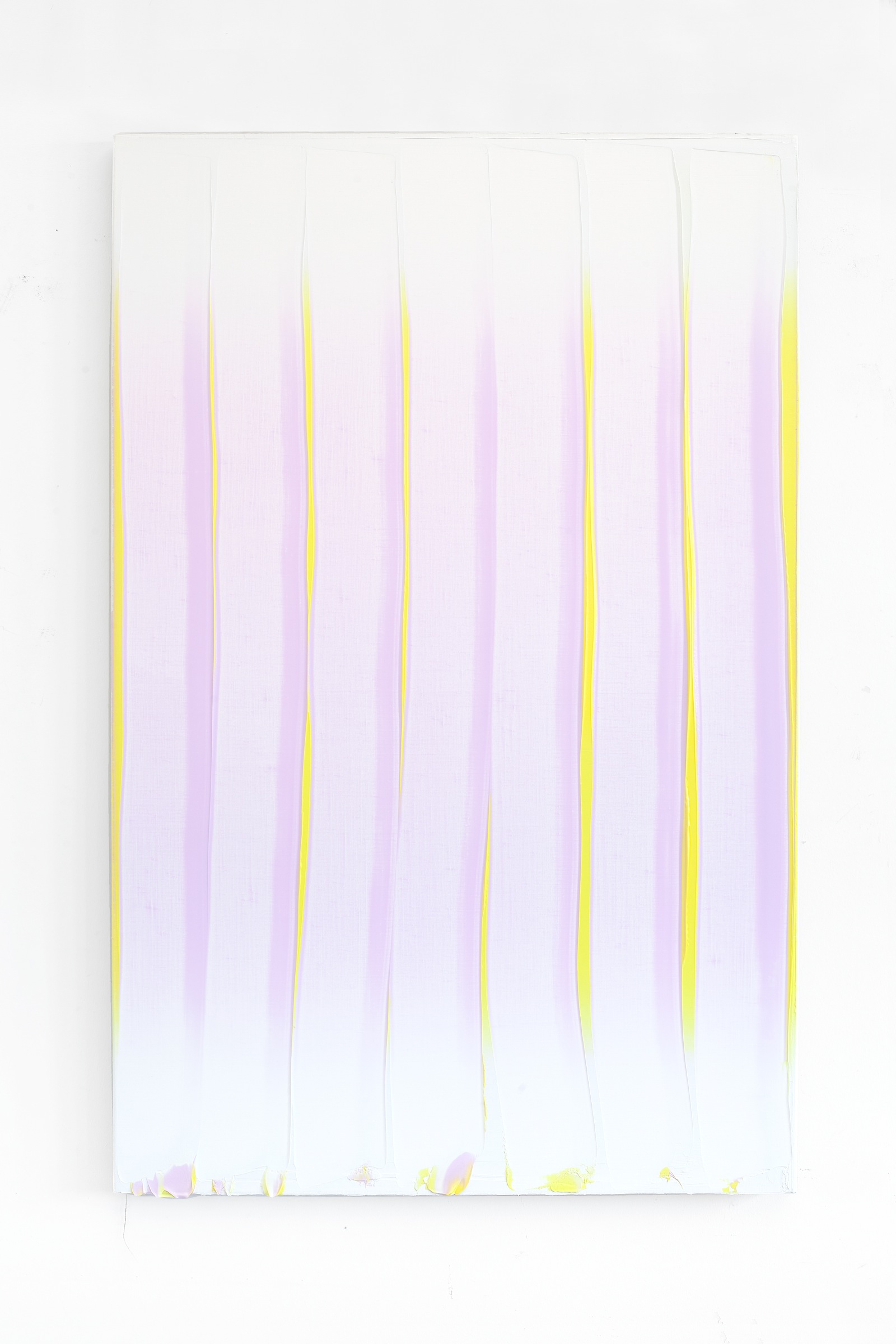
Peter Krauskopf|Z, B 121220|2020|140 x 90 cm|Oil on linen


Peter Krauskopf|ALTESBILD, B170421|2021|65 x 48 cm|Oil on linen 

Peter Krauskopf|ALTESBILD, B 100121|2021|51 x 38 cm|Oil on linen
Selected Solo Exhibitions
2021 STUDIO, with Susanne Kühn, Museum der bildenden Künste Leipzig, DE
2021 Peter Krauskopf solo exhibition, Bluerider ART, Taipei, Taiwan
2020 Peter Krauskopf, Walte Storms ,GalerieMunich,Germany
2019 Paintings 2015-2019, Munich RE Art Collection, München, DE
2019 Berlin-Klondyke, Galeria Monumental, Lisbon, Portugal
2018 Code of color deGalería Álvaro Alcázar,Madrid,Spain
2018 DriftKunsthaus Kaufbeuren,Kaufbeuren,Germany
2018 GrünsteinWalter Storms Galerie,Munich,Germany
2017 StrukturG2 Kunsthalle,Leipzig,Germany
2017 40 Jahre Walter Storms Galerie , 1977 – 2017,Walter Storms
Galerie,Munich,Germany
2016 Hide And SeekJochen Hempel, BerlinBerlin,Germany
2016 Walter Storms Galerie,Munich,Germany
2015 DioramaGalería Álvaro Alcázar,Madrid,Spain
2015 Falkenrot Preis 2015Künstlerhaus Bethanien,Berlin,Germany
2014 Zwalter storms galerie – Ismaninger Strasse,Munich,Germany
2014 Jochen Hempel Leipzig,Leipzig,Germany
2013 Elbe -Galeria Vilaseco,A Coruña,Spain
2012 GrauJochen Hempel Berlin,Berlin,Germany
2012 Landschaft mit abstraktem GemäldeGalerie Neue Meister
2012 Albertinum,Dresden,Germany
2012 Kunstgewerbemuseum Dresden,Dresden,Germany
2011 BlockWalter Storms Galerie,Munich,Germany
2009 Walter Storms Galerie,Munich,Germany
2008 Forum Kunst Rottweil,Rottweil,Germany
2008 Jochen Hempel Leipzig,Leipzig,Germany
2007 Mies van der Rohe Haus,Berlin,Germany
2006 Arbeiten 2006Galerie Elly Brose-Eiermann (former büro | für | kunst) –
Dresden,Dresden,Germany
2006 Galerie Christian Roellin – St. GallenSt. GallenSwitzerland
2005 Walter Storms Galerie,Munich,Germany
2004 Fehlfarben – Staatliche Kunstsammlung DresdenGalerie Neue Meister –
AlbertinumDresdenGermany
2001 EIN LOB DER KLEINEN DIFFERENZEN – Zur Konstruktion 1/01 von Peter
KrauskopfGalerie Paula Böttcher,Berlin,Germany
2000 Jochen Hempel Leipzig,Leipzig,Germany
2000 Stiftung Moritzburg – Kunstmuseum des Landes Sachsen-Anhalt,Halle,
Saale,Germany
2000 voxxx.galerie,Chemnitz,Germany
1999 Neue Arbeite-Galerie Frank Schlag & Cie. GmbH,Essen,Germany
Selected Group Exhibitions
2023 Homeland Universe, Bluerider ART, London, UK
2021 New LuxeBluerider ARTShanghaiChina
2021 Made in GermanyBluerider ARTTaipeiTaiwan
2020 Switch ONBluerider Art GalleryTaipeiTaiwan
2019 Berlin-KlondykeGaleria Monumental,Lisbon,Portugal
2018 Summer In The CityGalerie Asbæk,Copenhagen,Denmark
2018 Summer in the CityMartin Asbæk Gallery,Copenhagen,Denmark
2018 MdbK meets G2 Malerei aus Leipzig nach 2000Museum der bildenden Künste
Leipzig,Leipzig,Germany
2018 DepotJochen Hempel Leipzig,Leipzig,Germany
2018 Join the Dots / Unire le distanzeSalone Degli Incanti – Ex Pescheria
Centrale,Trieste,Italy
2018 Una treguaGalería Álvaro Alcázar,Madrid,Spain
2017 La Foresta AnimadaGalería Álvaro Alcázar,Madrid,Spain
2017 ¡Manos Arriba, Esto Es Un Atraco!CCA Andratx,Andratx,Spain
2017 Berlin-KlondykeSOEHT 7,Berlin,Germany
2017 Golden AssLADEN FUER NICHTS,Leipzig,Germany
2017 Berlin-KlondykeMaribor Art Gallery,Maribor,Slovenia
2017 40 Jahre Galerie, Jubiläumsausstellung / Teil 1Walter Storms Galerie,Munich,Germany
2016 Peter Krauskopf / Yuval Shaul / Yehuda Altmann – The WalkSpinnerei archiv
massiv,Leipzig,Germany
2016 Sammlung HildebrandG2 Kunsthalle,Leipzig,Germany
2016 10 AñosGalería Álvaro Alcázar,Madrid,Spain
2016 ExchangeJonathan Ferrara Gallery,New Orleans, LA,USA
2015 Galerie Jochen Hempel @ JFG – Gallery Exchange ExhibitionJonathan Ferrara
Gallery,New Orleans, LA,USA
2015 Gute Kunst? Wollen!Auf AEG,Nuremberg,Germany
2015 Imago Mundi. Luciano Benetton Collection. Mappa dell’arte nuovaFondazione Giorgio
Cini,Venice,Italy
2015 Berlin – Klondyke: 1. Berlin-EditionSalon Dahlmann,Berlin,Germany
2015 Berlin Artists’ Statements – announcementBWA Contemporary Art Gallery in
Katowice,Katowice,Poland
2015 G2 #1 – Leipzig 2015 – Sammlung HildebrandG2 Kunsthalle,Leipzig,Germany
2014 brennzeitenKunst und Literatur Forum Amalienpark e.V.,Berlin,Germany
2014 5 jahre schellingstr. 48Walter Storms GalerieMunichGermany
2014 Architekt – Busdriver – Zwei Brücken – 20 Jahre Gesellschaft für Moderne Kunst in
DresdenKunsthalle im Lipsiusbau,Dresden,Germany
2014 InterferenciasGaleria VilasecoA ,Coruña,Spain
2014 Group ShowJochen Hempel Leipzig,Leipzig,Germany
2013 salondergegenwart 2013salondergegenwart,Hamburg,Germany
2013 Berlin-KlondykeHipp Halle Gmunden,Gmunden,Austria
2013 Schöne Landschaft – Bedrohte Natur. Alte Meister im Dialog mit zeitgenössischer
KunstKunsthalle Osnabrück,Osnabruck,Germany
2013 Berlin KlondykeWerkschauhalle,Leipzig,Germany
2013 jetzt hier. Gegenwartskunst. Aus dem KunstfondsKunsthalle im
Lipsiusbau,Dresden,Germany
2012 Berlin-KlondykeNeuer Pfaffenhofener Kunstverein,Pfaffenhofen,Germany
2012 Alles WasserGalerie Mikael Andersen – Berlin,Berlin,Germany
2012 geteilt | ungeteilt – Kunst in Deutschland 1945 bis 2010Galerie Neue Meister –
Albertinum,Dresden,Germany
2011 Berlin Klondyke 2011Art Center Los Angeles,Los Angeles, CA,USA
2011 Berlin Klondyke 2011The Odd GalleryDawson, YT,Canada
2011 Das versprochene LandGalerie Neue Meister – Albertinum,Dresden,Germany
2009 KonstruktivLeinemann-Stiftung für Bildung und Kunst,Berlin,Germany
2009 Begegnung Bauhaus. Kurt Schmidt und Künstler der Avantgarde – von Kandinsky bis
VasarelyKunstsammlung Gera – Orangerie,Gera,Germany
2008 Alge – Dillmann – KrauskopfKunsthalle Lingen,Lingen,Germany
2007 30 Jahre walter storms galerie – JubiläumsausstellungWalter Storms
Galerie,Munich,Germany
2006 global playersBTAP (Beijing Tokyo Art Projects) – Tokyo,Tokyo,Japan
2006 Global Players – Zeitgenössische Künstler aus Japan und DeutschlandLudwig Forum für
Internationale Kunst,Aachen,Germany
2005 Summer Group ShowJochen Hempel Leipzig,Leipzig,Germany
2005 Martin Borowski | Peter Krauskopf | Sophia Schama – FRIES — MalereiGalerie Elly
Brose-Eiermann (former büro | für | kunst) – Dresden,Dresden,Germany
2005 Leipzig und die konstruktiv-konkrete KunstKunsthalle der Sparkasse
Leipzig,Leipzig,Germany
2002 Wunschbilder – Neuerwerbungen des Kunstfonds SachsenMuseum der bildenden
Künste Leipzig,Leipzig,Germany
2000 Bildwechsel – GruppenausstellungKunstsammlungen Zwickau – Städtisches
Museum,Zwickau,Germany
1998 Vitale Module. Gegenwartskunst aus SachsenKunstverein
Ludwigshafen,Ludwigshafen,Germany
1997 Vitale Module. Gegenwartskunst aus SachsenKunsthaus Dresden,Dresden,Germany
Collections
Berlinische GalerieBerlin
ALTANA Kulturstiftung im Sinclair-HausBad Homburg
Germanisches NationalmuseumNuremberg
Galerie Neue Meister – AlbertinumDresden
Kupferstich-KabinettDresden
G2 KunsthalleLeipzig
Stiftung Moritzburg – Kunstmuseum des Landes Sachsen-AnhaltHalle, Saale
Munich Re Art CollectionMunich

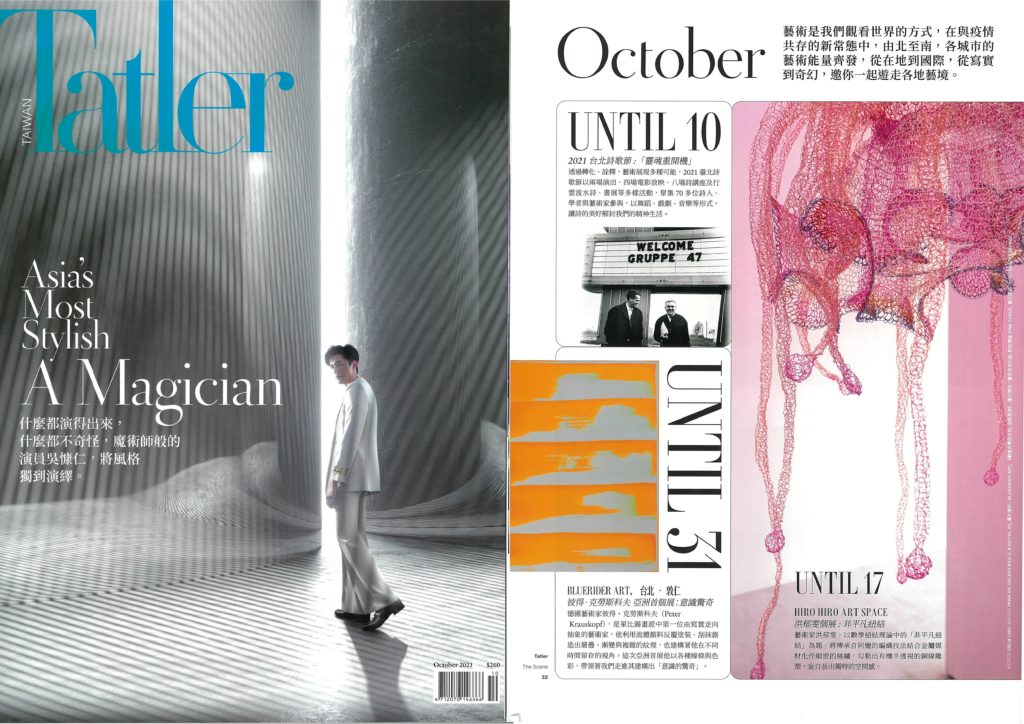 Tatler
Tatler
 MEHR BERLIN: VIER SEITEN KUNST, POLITIK UND STADTGEFUHL
MEHR BERLIN: VIER SEITEN KUNST, POLITIK UND STADTGEFUHL
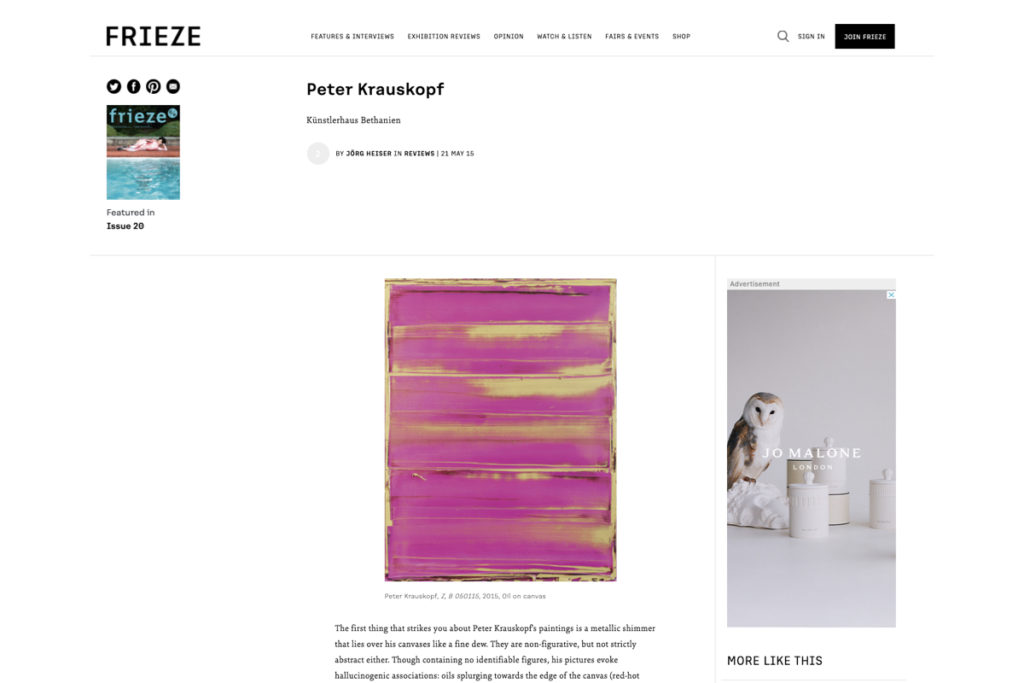 FRIEZE:Peter Krauskopf
FRIEZE:Peter Krauskopf

